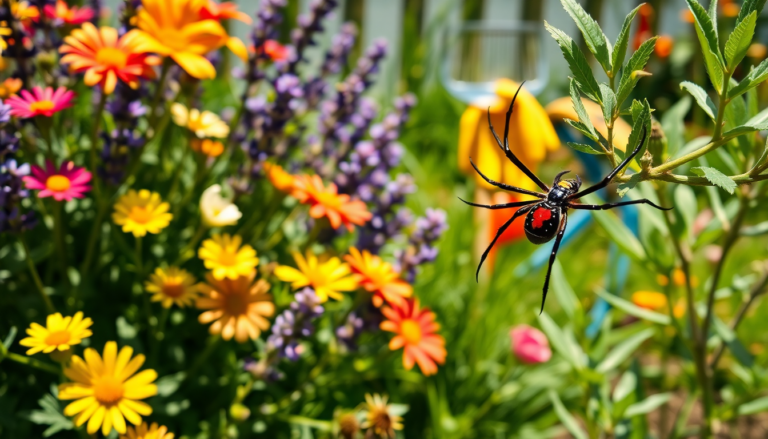Argomenti trattati
While many critters add charm to our gardens—think about the enchanting hummingbirds and the hardworking bees—some pests can send shivers down our spines. One such creature is the notorious black widow spider, easily recognized by its striking appearance and potentially dangerous bite. But don’t let fear take over! Understanding how to identify and manage these spiders is essential for keeping your home and pets safe. So, let’s dive into some effective strategies to ensure your living spaces remain a no-spider zone.
Spotting Black Widow Spiders
The black widow spider is famous for its shiny black body and the unmistakable red hourglass marking on its abdomen. But did you know there are several species of widow spiders across North America? According to Rod Crawford, the Curator of Arachnids at The Burke Museum, the three most common species in the United States are the southern, northern, and western black widows. Each one has unique features that can help you tell them apart.
For example, the southern black widow is mostly found in the southeastern United States, stretching down to parts of Texas and eastern Mexico. Females are particularly easy to spot thanks to their glossy black bodies and vibrant hourglass markings. In contrast, the northern black widow doesn’t have the hourglass shape; instead, it shows off two distinct red spots on its abdomen. The western black widow, typically found west of Kansas, also boasts a solid red hourglass but lacks any additional markings.
Now, here’s an interesting twist: some harmless spiders look a lot like black widows! Known as false widows, these spiders usually sport a dark hue with hints of brown or purple, but they don’t have those telltale red markings. Knowing how to tell the difference can help you avoid unnecessary panic when you encounter a spider in your garden.
Where to Find Black Widow Spiders
So, where do these elusive spiders like to hang out? Black widows are often found in quiet, damp, and dark spots—think garages, sheds, and even under piles of clutter in your yard. They thrive in undisturbed environments, making those storage spaces prime real estate for them. Agina Graham-Tye, a pest control expert, points out that while they can wander indoors, they’re much more likely to be found outside in their preferred habitats. Staying vigilant in these common areas is crucial to prevent infestations.
If you want to keep black widows at bay without resorting to extermination, consider using natural repellents. A mixture of peppermint, thyme, and rosemary oils can deter spiders from spinning webs in places you frequent. While this method won’t eliminate the spiders, it can significantly decrease their numbers in your garden or shed.
For those needing immediate solutions, you might try glue traps designed for insects, which can help capture some black widows. However, keep in mind that this approach may not totally solve the problem, especially if eggs have already been laid. Before calling in the pros, homeowners can also consider using pesticide sprays, but be cautious—protecting beneficial insects in your yard should always be a priority.
Preventing Black Widow Infestations
When it comes to managing potential black widow infestations, prevention is key! Sealing up any gaps and cracks around doors and windows is essential, as these tiny openings can serve as entry points for spiders. Adding weather stripping and door sweeps can provide extra protection, ensuring these pests don’t sneak into your home.
Regular property maintenance is also vital in discouraging black widows. Keeping your yard tidy, clearing away debris, and ensuring your plants are well-maintained can enhance your outdoor space while making it less inviting for spiders to set up shop. After all, a clean environment is less appealing for black widows!
If you ever find yourself facing a suspected black widow bite, identifying it can be tricky since the visible marks on the skin are often minimal. Symptoms may include localized pain, swelling, and even systemic reactions like muscle cramps or nausea. It’s crucial to seek immediate medical attention if you think you’ve been bitten; swift treatment can help avoid any complications.
Conclusion
Getting to know black widow spiders—how to recognize them, where they like to hang out, and how to manage their presence—can significantly boost your home’s safety. By implementing preventive strategies, maintaining your property, and knowing how to respond in case of a bite, you can create a safer environment for both your family and pets. Remember, while these spiders may seem intimidating, informed action can lead to peaceful coexistence and effective management.

